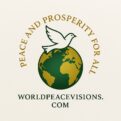The journey of India from its diverse pre-1947 unity to the dangerous rise of communal society and politics today — and why urgent reforms are needed to prevent a catastrophic future.” 1947, India was a land of immense diversity — languages, cultures, and religions all coexisted under one vast civilization.
Despite occasional tensions, centuries of shared existence had woven a deep tapestry of mutual respect and cultural unity.
Introduction and India Before 1947
Before 1947, India was a land of immense diversity — languages, cultures, and religions all coexisted under one vast civilization.
Despite occasional tensions, centuries of shared existence had woven a deep tapestry of mutual respect and cultural unity.
However, as British colonial rule deepened, communal politics began to rise.
The British administration, to prolong its rule, implemented the notorious policy of “Divide and Rule” — setting communities against each other.
Political leaders, in pursuit of their own ambitions, further fueled religious divisions.
Ultimately, this dangerous cocktail of communalism led to the tragic partition of India in 1947 — creating India and Pakistan.
The price was catastrophic: millions were displaced, and lakhs of innocent lives were lost in horrific communal violence.
A civilization that had endured for centuries was torn apart within months — all because of the poisonous rise of communal politics.
Today’s India and Pakistan: Rising Communal and orthodox Society
Fast forward to today, and the warning signs have returned — louder and more dangerous than ever.
Communal politics has once again captured the national imagination.
Society is witnessing unprecedented polarization based on religion, caste, and region.
A large section of the media has abandoned its duty to inform responsibly and instead fans communal fires for sensationalism and profit.
Religious and cultural groups have become so powerful that they can now pressurize governments to alter laws, policies, and governance in their favor.
In India, these forces are not just influencing elections; they are reshaping the very fabric of democracy.
The situation in Pakistan mirrors this tragedy:
Orthodox religious and Punjabi lobbies dominate politics.
Democratic and humanitarian values are severely weakened.
Minority regions like Sindh, Balochistan, and the North-West Frontier suffer systemic injustice.
Yet, despite this internal decay, Pakistan’s obsession with Kashmir — based purely on religious grounds — continues unabated.
This obsession ignores the reality that India houses a larger Muslim population than Pakistan itself, living and thriving within a secular constitutional framework.
Today, India’s own communal politics has dangerously aligned with Pakistan’s old communal narratives — bringing both brother nations back to a 1947-like confrontation.
But this time, the threat is not mere division —
it is nuclear annihilation.
If this suicidal path is not corrected, then by the time ordinary citizens awaken, it might be too late — the damage irreversible.
Solutions and Conclusion: The Way Forward
To save India — Pakistan and indeed South Asia — from self-destruction, urgent and bold steps must be taken:
End Communal Politics:
Political discourse must return to issues of development, education, and national progress — not religious divisions.
Abandon Orthodox Ideologies:
Both societies must embrace progressive, rational, and humanitarian thought over outdated orthodox beliefs.
Rebuild the Educational System:
We must create an education system that focuses on critical thinking, secular values, skill development, and technological innovation.
Fight Unemployment Through Skills and New Technologies:
Only a productive, skilled youth can resist the poison of hate; jobs create hope, and hope defeats division.
Work on the Spirit of Sahastitva (Coexistence):
The idea that multiple communities, identities, and beliefs can coexist peacefully must be the foundation of the new India and Pakistan.
Final Words:
The crossroads we stand at today is perhaps the most dangerous since 1947.
We have two options:
Fan the flames of hatred until nothing remains, or
Choose the harder but nobler path of peace, unity, and shared prosperity.
The time to choose is now — before the nuclear fire of communal politics consumes everything we hold dear.
